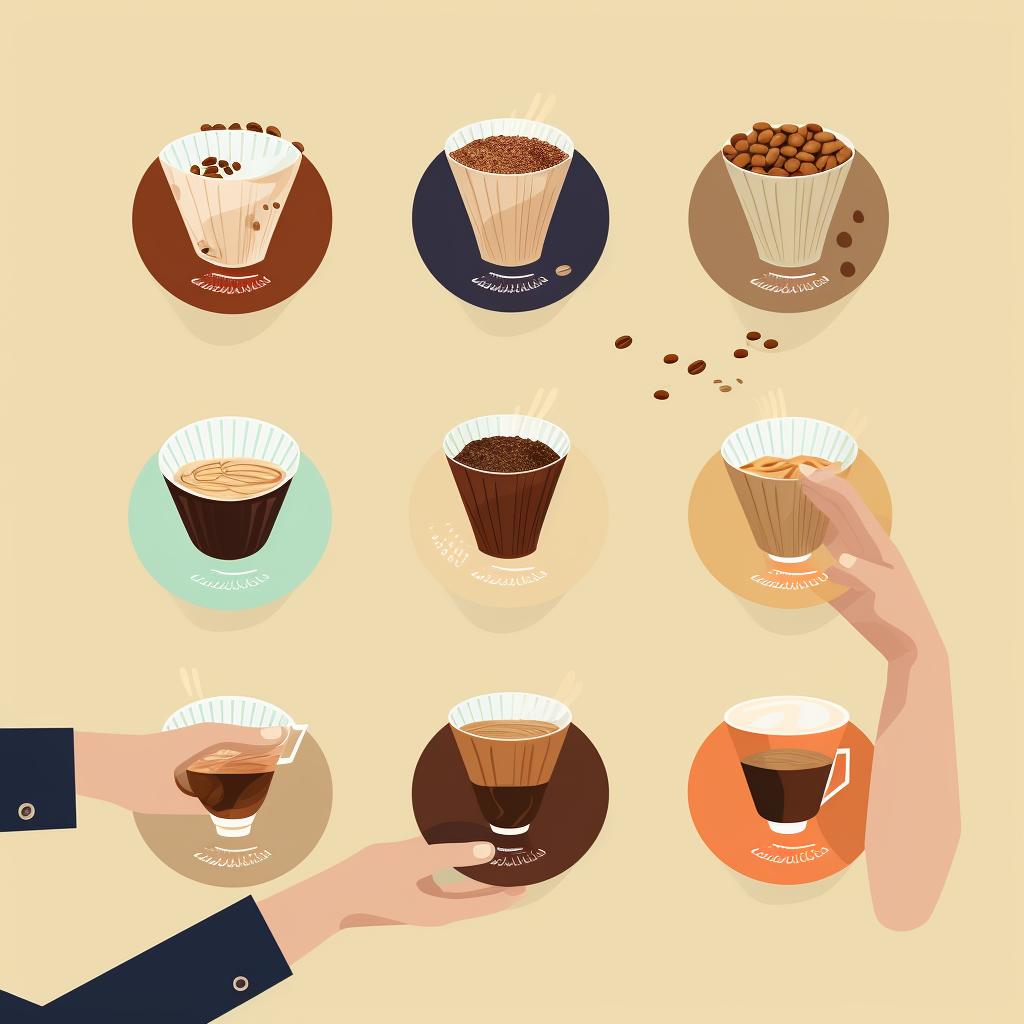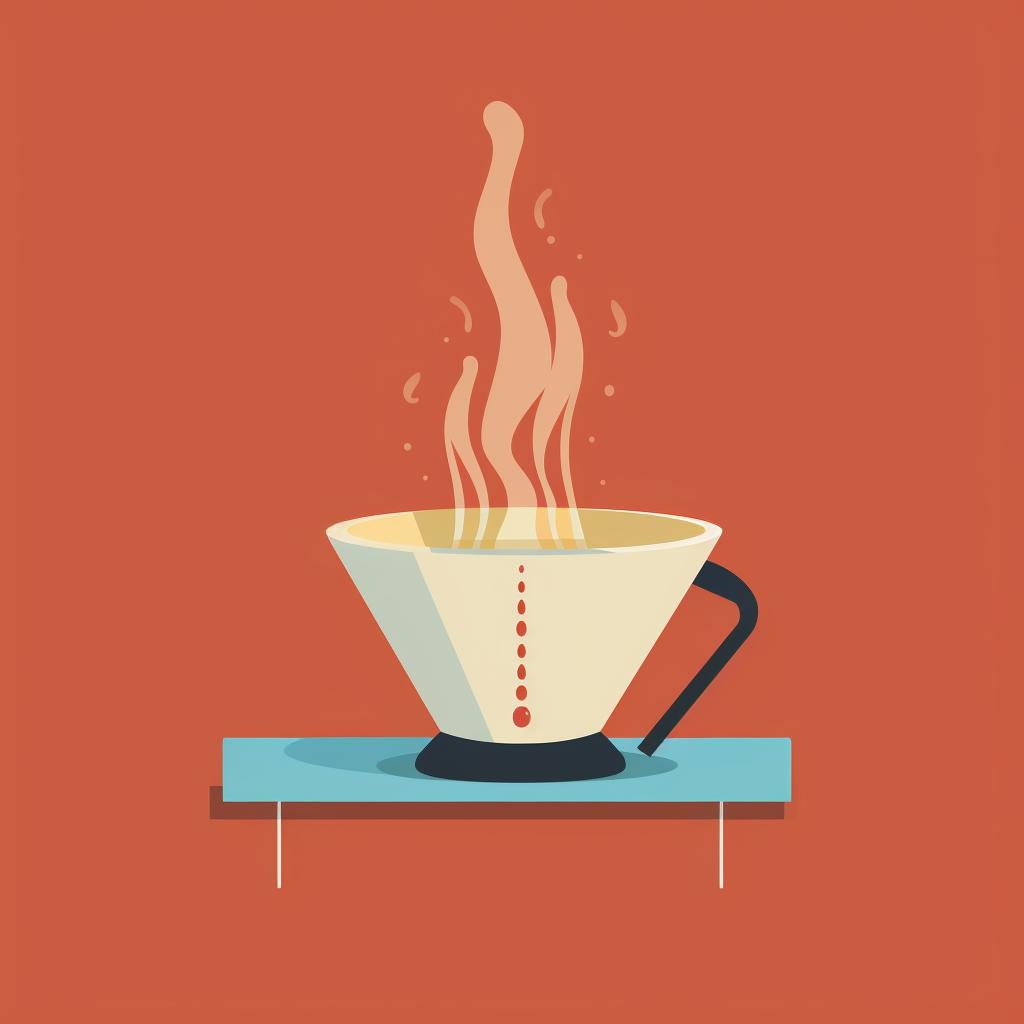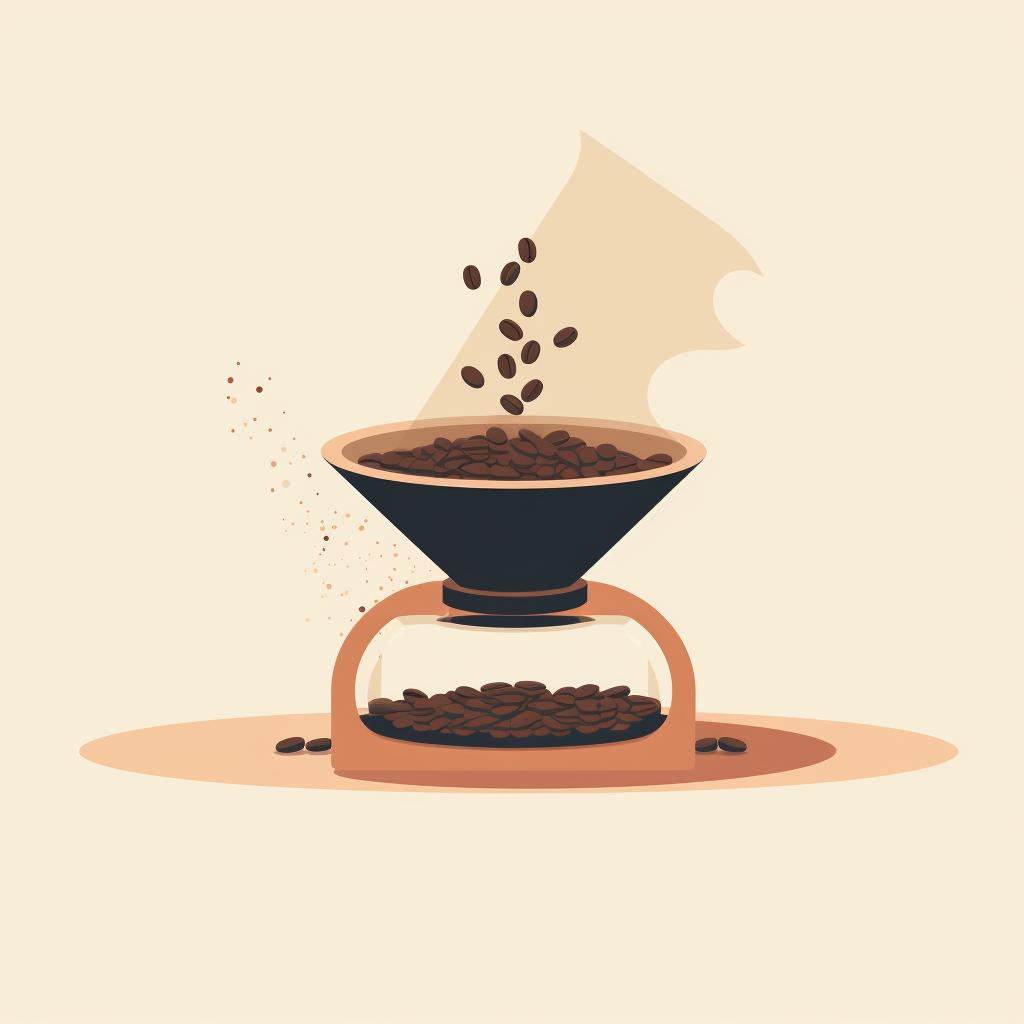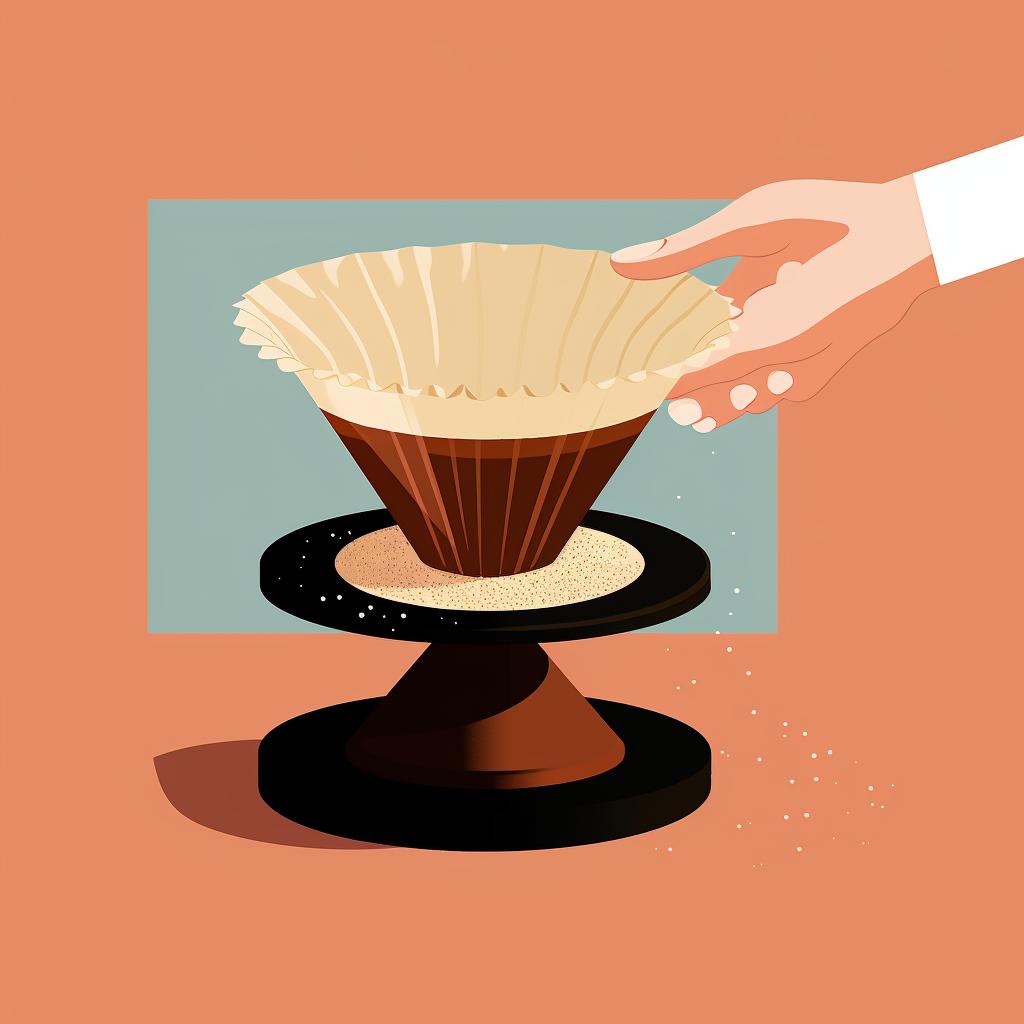What are the different types of coffee filters used in pour-over coffee?
When it comes to pour-over coffee, the type of filter you use can greatly impact the taste and quality of your brew. Here, we'll discuss the different types of coffee filters used in pour-over coffee, including the differences between Chemex and pour-over filters.
Unwrapping the Popularity of Paper Filters 📜
These are the most common type of filter used in pour-over coffee. They're disposable, making cleanup a breeze. Paper filters also produce a clean cup of coffee, as they trap most of the coffee's oils and sediment. However, they can sometimes impart a papery taste to the coffee, so it's recommended to rinse them before use.
Bleached or Unbleached? A Paper Filter Dilemma ☯️
When choosing coffee filters, you'll come across bleached and unbleached options. Bleached filters are treated with chlorine or oxygen to achieve a pure white color. They generally don't impart any flavors to the coffee. On the other hand, unbleached filters are more environmentally friendly, but they may add a papery taste to your coffee.
Why Metal Filters are the Eco-Friendly Choice 🌍
Metal filters are reusable, making them a more sustainable choice. They allow more oils and fine coffee particles to pass through, resulting in a fuller-bodied cup of coffee. However, they require regular cleaning and may not be suitable for those who prefer a cleaner cup of coffee.
Cloth Filters: A Taste of Tradition in Your Coffee ☕
Cloth filters, often made from cotton or hemp, are another reusable option. They provide a balance between paper and metal filters, allowing some oils through but filtering out most of the sediment. They need to be cleaned thoroughly after each use and replaced regularly.
The Chemex Filter: A Unique Brew Experience 🧪
Chemex uses its own proprietary filters, which are thicker than standard paper filters. This results in a slower brew and a very clean cup of coffee. The thickness of the filter also helps in maintaining the heat during the brewing process. You can read more about Chemex filters here.
Which Filter is Right For You?
Test your knowledge on the different types of coffee filters used in pour-over coffee.
Learn more about Which Coffee Filter is Right For You? Take the Quiz! ☕️ or discover other Real Coffee Club quizzes.
Now that you know the different types of coffee filters and their impacts on your pour-over coffee, you might be wondering which one is the right choice for you. This will largely depend on your personal taste preferences and how much effort you're willing to put into the brewing and cleaning process.
Coffee Filter Hacks: Elevate Your Pour-Over Game 🚀
Regardless of the type of filter you choose, there are a few general tips to follow. Always rinse your filter before brewing to get rid of any paper taste or debris. Ensure the filter is properly placed and secure to prevent grounds from escaping into your brew. Finally, remember to dispose of or clean your filter immediately after brewing to avoid any unpleasant tastes.
Now that we've covered the basics and the importance of rinsing your filter, let's dive deeper into the process of using a pour-over coffee filter effectively.
Learn more about Mastering the Art of Using a Pour-Over Coffee Filter 🌟 or discover other Real Coffee Club guides.
With these steps, you're well on your way to brewing a perfect cup of pour-over coffee. Remember, the key is in the details. Happy brewing!
For a more detailed guide on how to use a pour-over coffee filter, ranging from how to rinse it to how to dispose of it, check out our Ultimate Guide to Getting the Best Out of Your Pour-Over Coffee Dripper.
Comparison of Different Types of Coffee Filters
Understanding the different types of coffee filters can be a bit overwhelming. To make it easier, we've compiled a comparison table that breaks down the key features of each type.
| Filter Type | Disposable/Reusable | Impact on Taste | Ease of Cleanup |
|---|---|---|---|
| Paper Filters | Disposable | Less oils and fine coffee particles, resulting in a cleaner taste | Easy 🟢 |
| Bleached vs Unbleached Paper Filters | Disposable | Bleached filters may impact taste due to chemical treatment | Easy 🟢 |
| Metal Filters | Reusable | More oils and fine coffee particles, resulting in a full-bodied brew | Requires cleaning after each use 🔴 |
| Cloth Filters | Reusable | Balance between paper and metal filters in terms of taste | Requires cleaning after each use 🔴 |
| Chemex Filters | Disposable | Slower brew and cleaner taste due to thicker filter | Easy 🟢 |
This table provides a snapshot of the different types of filters. Remember, the best filter for you depends on your personal taste and brewing preferences. Experiment with different filters to find the one that suits your palate the best.
Still undecided on which filter is best for your pour-over coffee? Here's a comparison table to help you make the right choice.
In conclusion, the type of filter you choose for your pour-over coffee can greatly affect the taste, body, and overall brewing experience. It's all about personal preference, so don't be afraid to try different filters to find the one that suits your taste best. Remember, the journey to the perfect cup of coffee is all about exploration and enjoyment!







